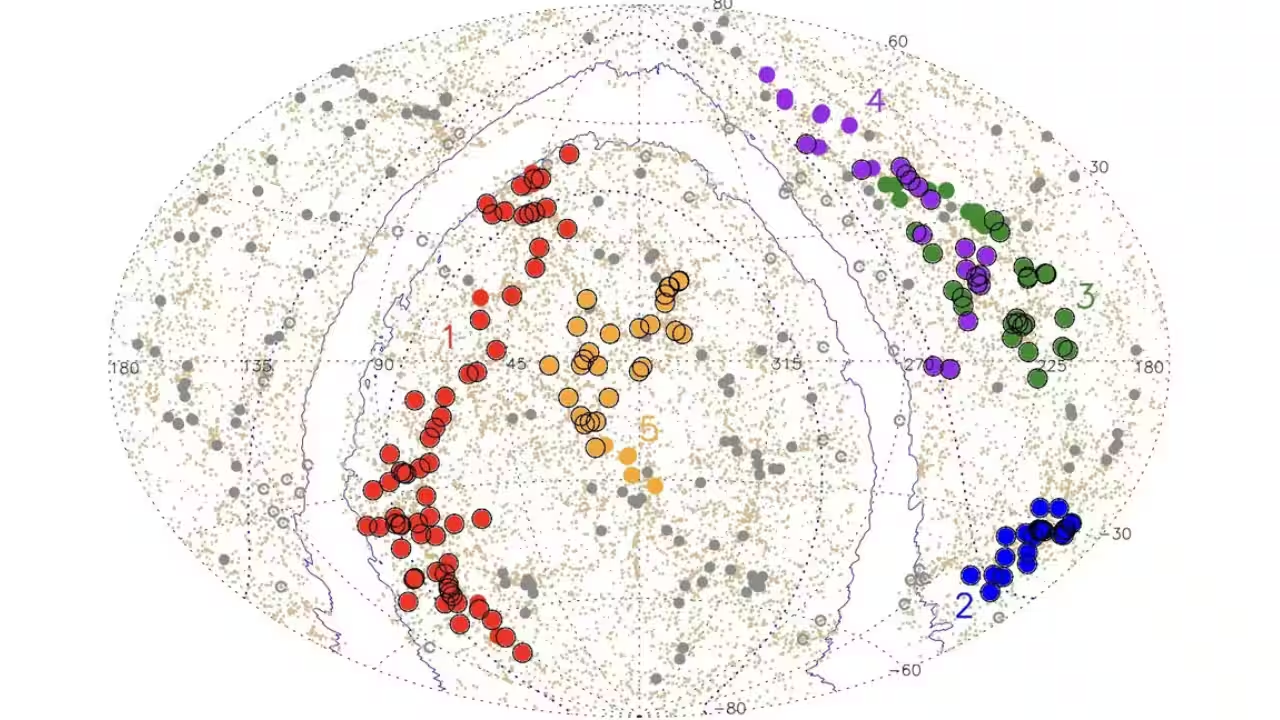In space, astronomers have discovered a massive cosmic structure. Known as "Quipu," this enormous formation is 1.3 billion light-years across. Scientists say it might change how we think about the large-scale structure of the universe.
Quipu got its name from an old Incan measurement system. It is over 13,000 times the Milky Way's size. It was discovered by researchers while examining data from galaxy clusters. However, the study has not yet undergone peer review and is accessible on ArXiv.
Biggest Structure in Space
The biggest known structure in space is the Hercules-Corona Borealis Great Wall, stretching 10 billion light-years, though some scientists debate its existence. Meanwhile, another structure called Quipu is clearly visible in sky maps.
Five Newly Discovered Superclusters
Scientists have also found four other huge superclusters. Together, these five structures hold:
- 45% of all galaxy clusters
- 30% of all galaxies
- 25% of the matter in the observable universe

Five recently discovered superstructures are shown in this picture. The largest in the local universe is Quipu (red), followed by Sculptor-Pegasus (beige), Shapley (blue), Serpens-Corona Borealis (green), and Hercules (purple). (Photo: arXiv/Boehringer et al.)
Importance of Super Clusters
Superclusters are enormous clusters and groups of galaxies. The Laniakea Supercluster is home to the Milky Way itself. Scientists believe Quipu has a significant impact on cosmic motion.
Quipu plays a part in the Local Group's gravitational pull. Its movement in relation to the Cosmic Microwave Background is influenced by this. To validate these effects, more research is necessary.
ALSO READ: Which American Nation Is the First to Exit China’s BRI? Check Here
ALSO READ: When Will India Launch Its First Made-in-India Semiconductor Chip?
A Short-Term Cosmic Structure
Despite its immense size, Quipu is not going to last forever. Scientists predict that it will eventually fragment into smaller, collapsing components. According to them, it is a "transient configuration" that will evolve with time.
Investigating Quipu might help scientists improve cosmological models. It might provide fresh perspectives on large-scale cosmic processes and galaxy evolution. Scientists emphasize that more research is necessary to fully understand its effects on the cosmos.
Comments
All Comments (0)
Join the conversation